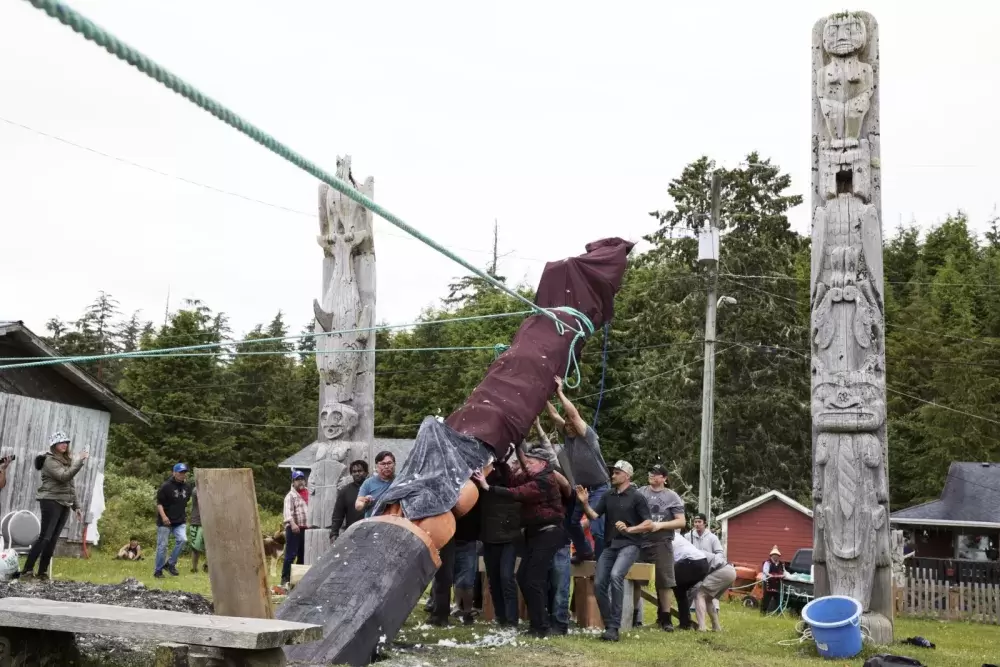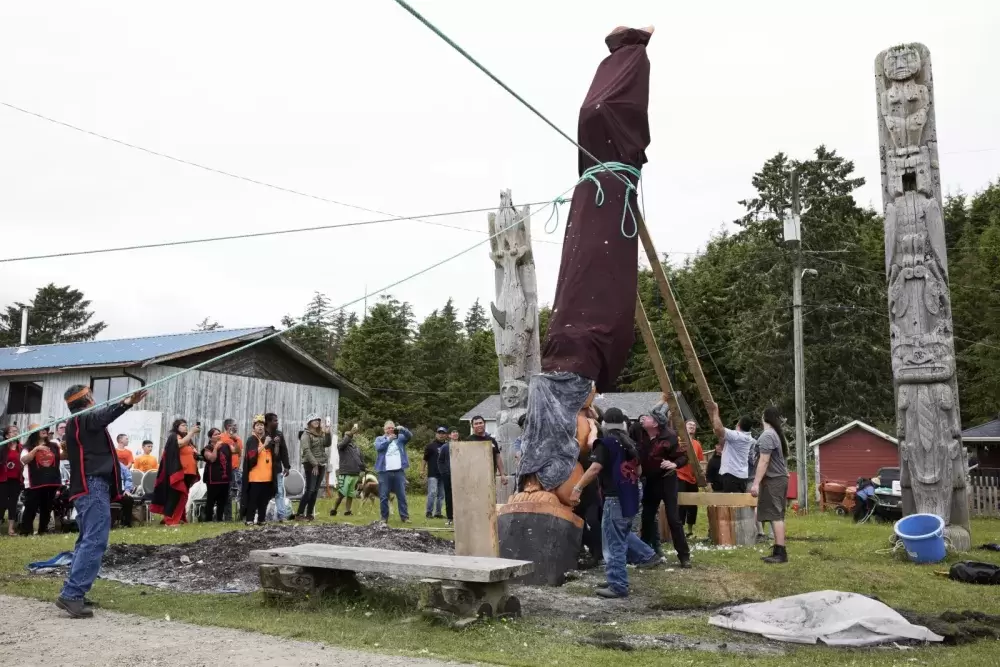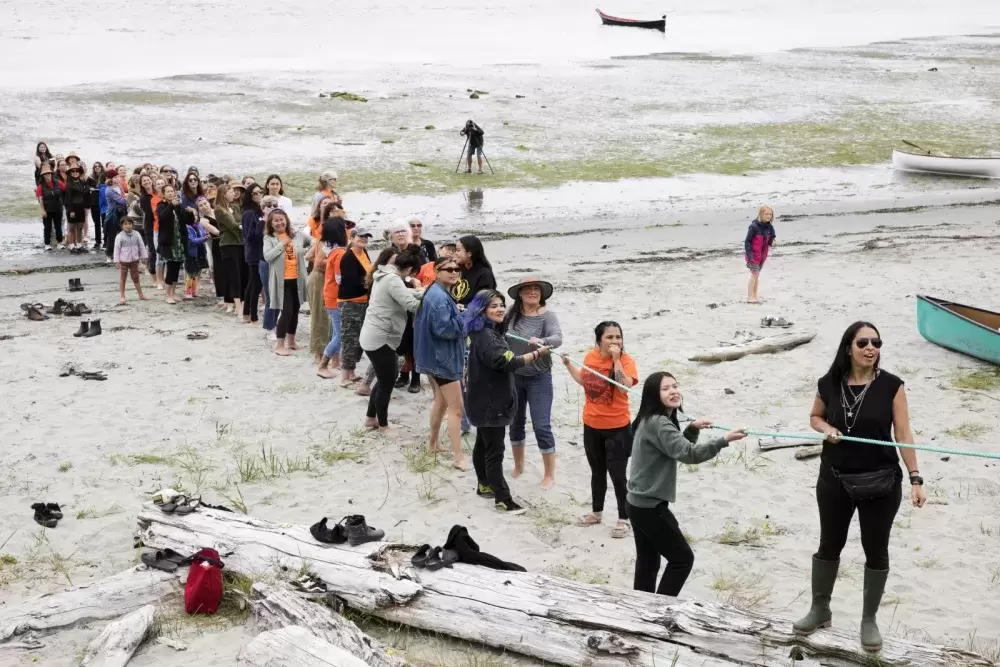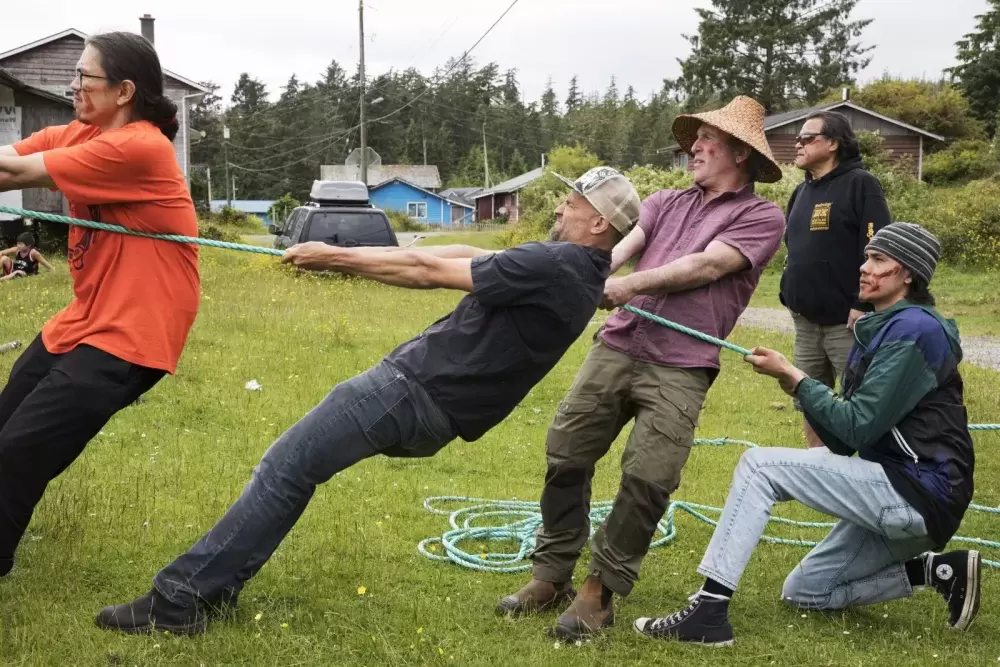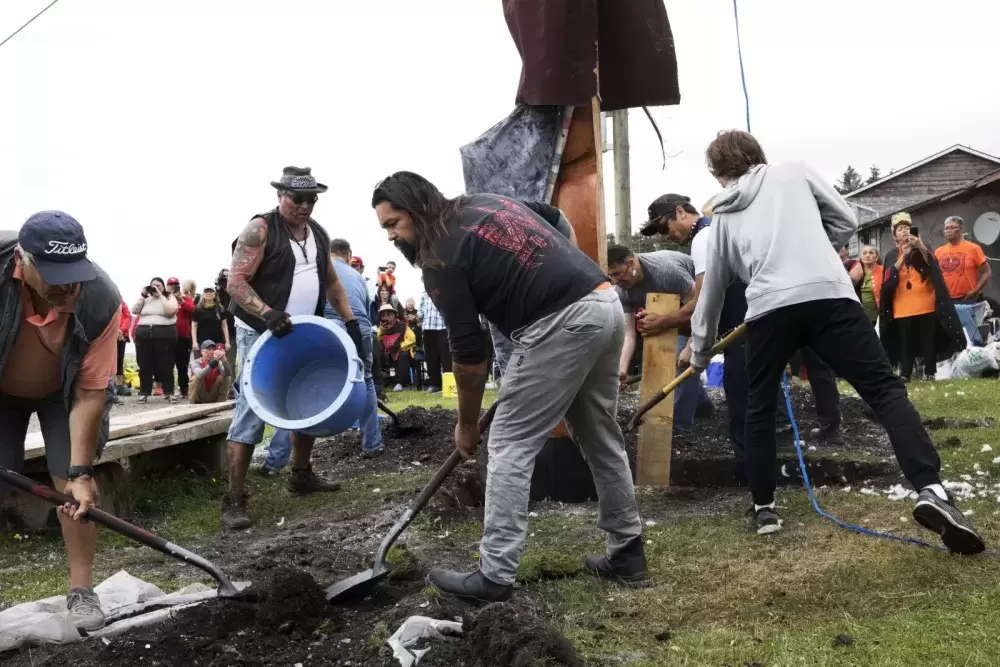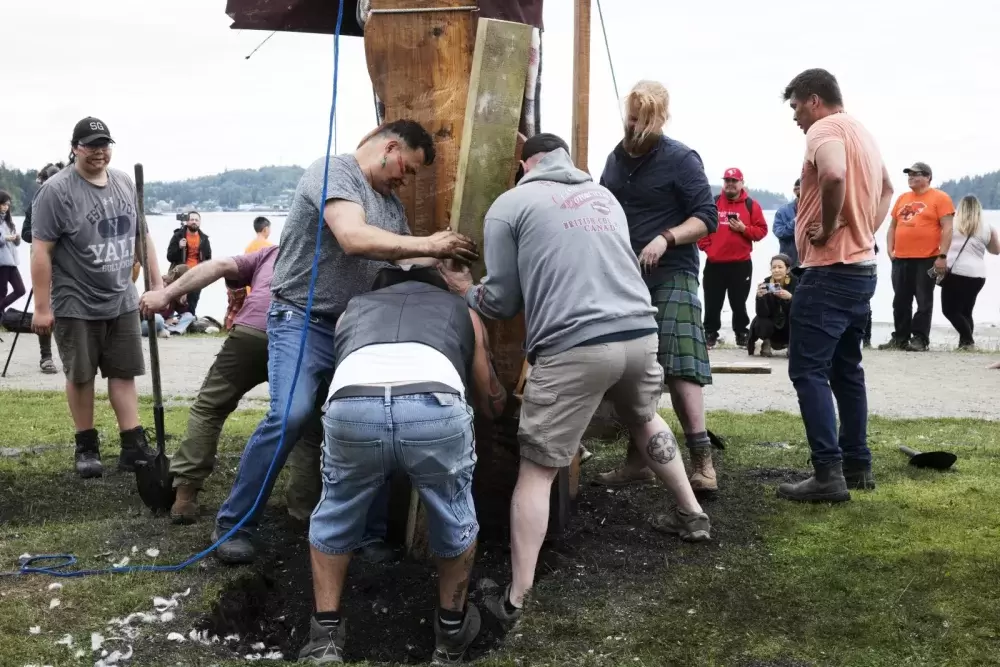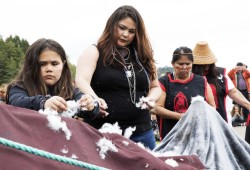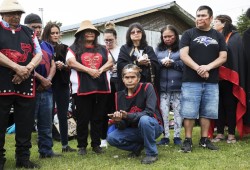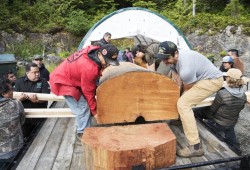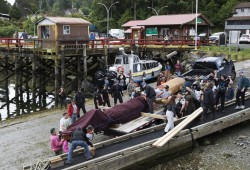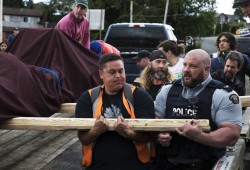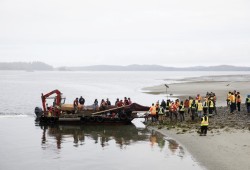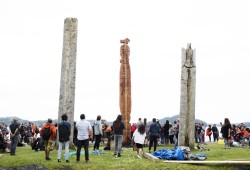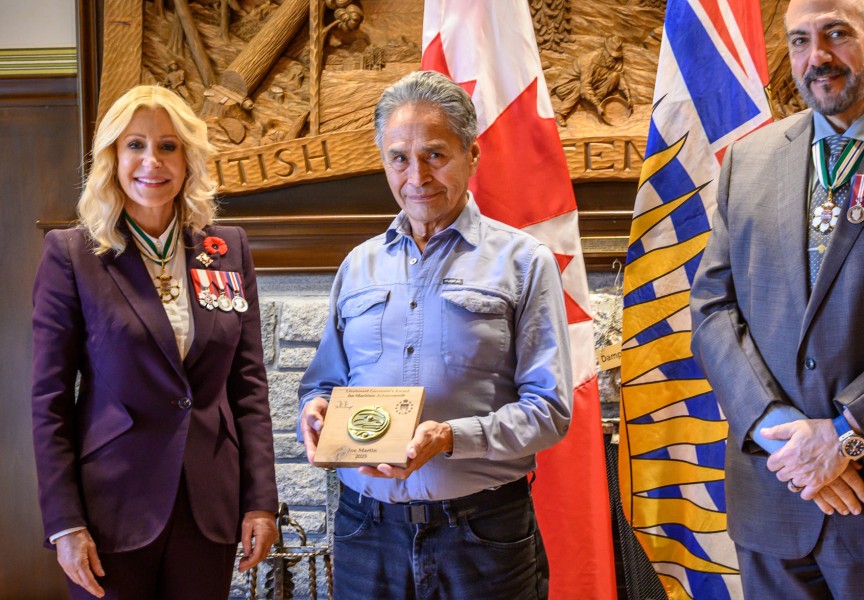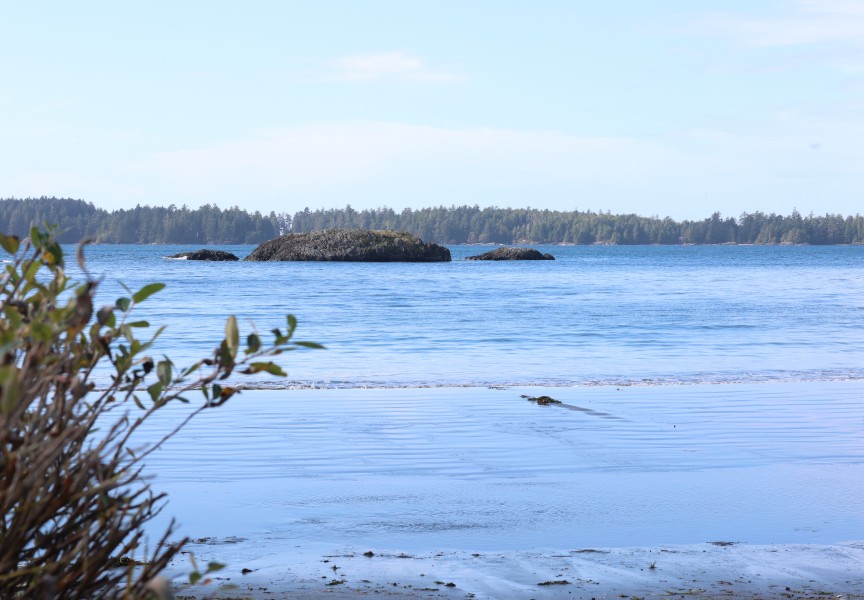As Eddie Frank travelled to Opitsaht from Tofino in a water taxi, he openly spoke over the phone sharing his excitement about witnessing the raising of a totem pole for the first time.
The 71-year-old had seen it done in videos before, but never in person – and never in Nuu-chah-nulth territory.
“It means a lot to me,” he said. “I don’t see too many totem poles on the west coast.”
Around two years ago, Tla-o-qui-aht First Nation master carver Joe Martin was asked to carve a totem pole by his brother, Nookmis. As the head of their family’s house of Ewos, Nookmis wanted it to be carved in remembrance of “the pandemic we all faced together,” Martin said.
With the help of various local artists, including his daughter, Gisele, Gordon Dick, Patrick Amos, Robin Rorick, Ken Easton, Robinson Cook and Nookmis, Martin began carving the totem pole on June 18, 2021.
Over a year later, it was transported from the Naa’Waya’Sum Coastal Indigenous Gardens (formerly the Tofino Botanical Gardens) in Tofino, to Tla-o-qui-aht’s ancient village site on Meares Island in preparation for its raising on July 1.
It was not a small task and required a truck, barge, crane and the strength of around 40 people to move the 32-foot-tall totem pole to its rightful place.
Dick described it as another step in bringing it to life.
“It’s exciting to see all the support that’s pulling the community together,” he said.
Before European settlers arrived on the west coast in the late-1700s, most families from Tla-o-qui-aht had four totem poles displayed in front of their homes.
When a woman married into a tribe, a totem pole was raised to depict her family’s history. It would stand next to three others: one for her husband’s history, another for his parent’s history and the fourth for his grandparent’s history, according to teachings given to Martin by his late-father.
In 1792, American trader Captain Robert Gray set fire to around 200 homes in Opitsaht, along with all the totem poles that stood beside them.
Around a century later, many of the totem poles that had been replaced were removed from Opitsaht when the Indian Act was passed by the federal government in 1876.
The act aimed to eliminate Indigenous culture, with the goal of assimilating First Nations, Inuit, and Métis into a Eurocentric society, and provided a framework for government officials and ethnologists to remove totem poles.
Some of the only remaining relics carved in the traditional Tla-o-qui-aht style can be found at the Field Museum of Natural History in Chicago.
Up until now, only two totem poles from 1989 and 1993 remained in Opitsaht – both of which have succumbed to the harsh west coast elements and have begun to rot.
Martin had his hand in carving both of them, which were raised by his father and stand in front of the land of his childhood home.
When the new pole was transferred from Tofino to Opitsaht on June 29, it was placed in between the two existing structures.
Named after one of Martin’s ancient relatives who was a “truth-speaking orator,” the new totem pole is called Hinaaqsuuqʷa.
Around 100 people poured onto Meares Island on July 1 to witness the raising of Hinaaqsuuqʷa.
Using three ropes tied around the front and one secured to the back, Martin directed those gathered to help push and pull the totem pole upright. Once raised, men raced to shovel and pack soil into the hole where the totem stood to secure it into place.
Overwhelmed with emotion, Nookmis said he didn’t have the words to describe how he felt.
In many ways, he said, the totem pole was carrying on his father’s legacy.
Since the artists began carving Hinaaqsuuqʷa, it has garnered a lot of public attention and was even featured in the latest issue of National Geographic Magazine.
By carving the totem pole in a public space at the Naa’Waya’Sum Coastal Indigenous Gardens, Martin said people were able to drop by and ask questions.
“It's something that hasn’t been public before,” he said. “People would carve and [a totem pole] would just appear.”
Martin said he wanted to involve as many people as he could to make it accessible in hopes of inspiring others to carve totem poles of their own.
Tla-o-qui-aht First Nation Natural Resources Manager Saya Masso lives in the house adjacent to where the totem pole was raised.
“It’s an honour to see the revival of our culture and the beautification of our village,” he said. “Seeing our artisans do this and be proud and lift up our village – it's just an honour.”
Masso’s mother, Barb Audet, echoed his sentiment and said she hopes to see more families place totem poles in front of their homes. By practicing their culture, Audet said it teaches children who they are and instils them with pride.
“I hope that our children will be able to look at this and be proud of it,” she said.
Four skulls were carved into the lower mid-section of the totem pole by Gisele. One represents the most recent COVID-19 pandemic, another symbolizes past pandemics Nuu-chah-nulth peoples have endured, including smallpox and tuberculosis, the third skull honours all the Missing and Murdered Indigenous Women and Girls, and the final skull recognizes all the children who never returned home from residential school, explained Martin.
“Those children never made it back home – and that’s a fact,” said Martin. “Those are stories that our ancestors have told us for a long, long time and no one believed it for many years until they started finding these graves at residential schools.”
As a residential school survivor, Frank said the raising of the pole was “emotional.”
“I feel the need to support those that survived and those that didn’t survive,” he said. “I wouldn’t miss this day for anything in the world.”
The raising of the totem pole coincided with Canada Day. It served as a reminder to Frank that the government has not recognized National Indigenous Peoples Day as a statutory holiday.
An apology isn’t good enough, he said.
“They’ve got to start acknowledging who we are and whose land they took away,” Frank said.
Indigenous people were so “overwhelmingly assimilated and colonized,” he said.
It’s a legacy that continues to haunt Frank, who has spent his life living with painful memories from his time attending the Alberni Indian Residential School in Port Alberni.
“I’m glad Joe [Martin] is doing this to make us realize our culture is still very much alive,” he said. “That’s why I’m here.”

